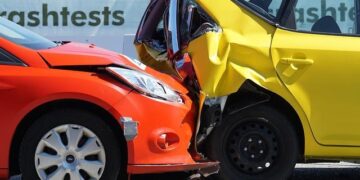Table of Contents
Section 1: Car Insurance as a Financial Fortress: Beyond Legal Compliance
Automobile insurance is frequently viewed as a mandatory, recurring expense—a legal hurdle to be cleared at the lowest possible cost. This perspective, while common, is fundamentally flawed and financially perilous. A properly structured car insurance policy is not a mere commodity; it is a sophisticated financial instrument and a critical component of personal risk management. It serves as the primary bulwark of an individual’s financial fortress, designed to protect a lifetime of accumulated assets—savings, investments, home equity, and future earnings—from the catastrophic liability that can arise from a single moment of misfortune on the road.
Core Concept: The Financial Fortress Analogy
A useful framework for understanding personal finance is the “financial fortress”.1 This fortress represents the entirety of one’s financial life. Every dollar saved and invested is another “brick in the wall,” strengthening the structure over time.1 However, savings alone, no matter how substantial, are insufficient to withstand a direct, cataclysmic assault, such as a multi-million-dollar lawsuit following a severe auto accident. This is where insurance provides the heavy fortifications. It is the system of moats, ramparts, and reinforced walls that can repel an attack that would otherwise overwhelm and destroy the fortress.
A holistic financial plan, sometimes conceptualized through frameworks like the F.O.R.T.R.E.S.S. Plan (Financial Optimization, Risk Management, Tax Efficiency, Retirement Strategies, Estate Planning, Simplification, and Security), positions risk management as a foundational pillar.2 Within this context, car insurance is not an afterthought but a strategic imperative, shielding all other financial goals from a devastating and unpredictable threat.
Applying Risk Management Principles to Personal Finance
The decision-making process for selecting insurance coverage should mirror the systematic approach used in professional fields like civil engineering and corporate enterprise.3 This process transforms the choice from a simple price comparison into a strategic analysis of personal risk.
1. Risk Identification: The first step in any risk management plan is to identify potential threats.3 Just as civil engineers methodically list project risks like design flaws, supply chain disruptions, or weather delays 7, an individual must identify the full spectrum of risks they face as a driver. This goes beyond the obvious risk of causing an accident to include being struck by an uninsured or underinsured driver, vehicle theft, vandalism, or damage from natural disasters like hail or fire.7 This process is akin to a military commander surveying the terrain around a fortress to identify all potential avenues of attack.
2. Risk Assessment: Once identified, each risk must be assessed based on its likelihood of occurring and its potential impact if it does.9 Insurance companies perform this assessment quantitatively, using vast datasets and complex algorithms to analyze a driver’s age, location, vehicle type, and driving history to calculate a precise premium.7 For the individual, the assessment is more qualitative but no less critical. The likelihood of a minor fender-bender may be relatively high, but its financial impact is manageable. Conversely, the likelihood of causing a multi-vehicle accident resulting in a permanent disability is low, but its financial impact is catastrophic and can easily exceed millions of dollars.10 This step involves understanding the magnitude of the threats the fortress may face.
3. Risk Treatment and Transference: After identifying and assessing risks, a strategy must be developed to treat them. While some risks can be mitigated through actions like defensive driving or accepted by choosing a higher deductible, the cornerstone of insurance is the strategy of risk transference.4 This is the core function of the fortress’s walls. By paying a predictable, manageable premium, an individual transfers the unpredictable and potentially ruinous financial liability of an accident to the insurance company.
This reframing of insurance as a risk management service, rather than a product, is crucial. The premium is not the price of a “thing”; it is a fee paid for a service that removes a massive, unquantifiable liability from an individual’s personal balance sheet and places it onto the insurer’s. This shifts the central question from “How little can I pay?” to the more strategic inquiry: “How much risk am I comfortable retaining, and how much must I transfer to ensure my financial survival?” The answer to this question reveals that the true cost of insurance is not merely the premium but the premium combined with any retained risk, such as deductibles and, most importantly, coverage gaps. A “cheap” policy with low limits can become infinitely more expensive than a “premium” policy in the event of a serious claim, where out-of-pocket costs from retained risk can lead to bankruptcy. The real cost is only revealed after the fortress has been attacked.
Section 2: Deconstructing the Policy: The Building Blocks of Your Coverage Fortress
An auto insurance policy is not a monolithic entity but a bundle of distinct coverages, each serving a specific defensive function. Understanding these components is essential to constructing a comprehensive financial fortress with no exploitable weaknesses. A common mistake is to focus on one area of coverage while neglecting others, creating a critical vulnerability in the overall defensive structure.
The Outer Walls: Liability Coverage (Bodily Injury & Property Damage)
This is the most critical component of the policy and the primary wall of the financial fortress. Its function is to protect your assets from claims made by others for injuries and property damage when you are legally at fault for an accident.12 Liability coverage pays for the other party’s medical bills, rehabilitation costs, lost wages, pain and suffering, and legal defense fees if you are sued.13 It is almost universally mandatory, with nearly every state requiring drivers to carry it.15
Liability coverage is typically expressed in a three-number “split limit” format, such as $100,000/$300,000/$100,000.14
- Bodily Injury Liability (BI) per Person: The first number ($100,000) is the maximum amount the insurer will pay for injuries to a single person in an accident you cause.
- Bodily Injury Liability (BI) per Accident: The second number ($300,000) is the maximum total amount the insurer will pay for all injuries to all people in a single accident you cause.
- Property Damage Liability (PD): The third number ($100,000) is the maximum amount the insurer will pay for damage you cause to other people’s property, such as their vehicles, fences, or buildings.
Crucially, liability coverage does not pay for your own injuries or damage to your own vehicle.13 Its sole purpose is to shield your fortress from external claims.
The Keep: Collision and Comprehensive Coverage (Physical Damage)
While liability coverage forms the outer walls, Collision and Comprehensive coverages protect the high-value asset inside the fortress: your own vehicle. When combined with liability, these are often referred to as “full coverage”.13
- Collision Coverage: This pays to repair or replace your vehicle if it is damaged in a collision with another car or an object (e.g., a tree, guardrail, or pole), regardless of who is at fault.16 This includes single-car accidents where you roll your vehicle or hit a stationary object.18
- Comprehensive Coverage: Also known as “other than collision,” this pays for damage to your vehicle from non-collision events. This includes theft, vandalism, fire, hail, flooding, falling objects, or hitting an animal.19
Both coverages carry a deductible, which is the amount you must pay out-of-pocket before the insurance payment begins. Common deductible amounts are $500 or $1,000.17 The coverage limit for both is typically the vehicle’s
Actual Cash Value (ACV), which is its market value at the time of the loss, accounting for depreciation.17 While no state legally requires these coverages, they are almost always mandated by lenders for any vehicle that is financed or leased to protect their financial interest in the property.15
The Garrison: Uninsured/Underinsured Motorist (UM/UIM) Coverage
This coverage acts as your fortress’s internal defense force. It protects you when the party at fault for an accident is financially ill-equipped to compensate you for your losses.22
- Uninsured Motorist (UM) Coverage: This pays for your medical expenses (and in some states, vehicle repairs) when you are injured by an at-fault driver who has no insurance at all, or in a hit-and-run incident.23
- Underinsured Motorist (UIM) Coverage: This activates when the at-fault driver has insurance, but their liability limits are insufficient to cover the full extent of your medical bills and other damages.15 Your UIM coverage pays the difference between the at-fault driver’s low limit and your higher UIM limit.
This coverage is strategically vital because it directly addresses a systemic failure: the reality that many drivers on the road do not carry enough insurance to make their victims whole after an accident they cause.23
The Infirmary: Personal Injury Protection (PIP) and Medical Payments (MedPay)
This is the fortress’s medical wing, providing swift payment for medical treatment for you and your passengers regardless of who is at fault.26 This is essential for accessing immediate care without waiting for a lengthy fault determination process.
- Medical Payments (MedPay): This covers necessary medical and hospital expenses, and in some cases funeral costs, for you and your passengers.15 It is required in a few states and optional in many others.
- Personal Injury Protection (PIP): Primarily found in “no-fault” states, PIP is a broader coverage. In addition to medical bills, it can also reimburse a portion of lost wages, funeral expenses, and the cost of essential services you can no longer perform due to injury, such as childcare or housekeeping.15
The Support Services: Optional Coverages
These coverages are the logistical support systems that help you maintain your lifestyle and minimize disruption while the fortress is being repaired after an attack.
- Rental Reimbursement: Covers the cost of a rental vehicle while yours is being repaired after a covered claim.15
- Gap Insurance: For financed or leased vehicles, this covers the difference—or “gap”—between the car’s ACV payout and the remaining balance on your loan if the car is declared a total loss.15
- New Car Replacement: If your new car is totaled within the first year or two of ownership, this coverage pays to replace it with a brand-new vehicle of the same make and model, protecting you from initial, steep depreciation.15
- Towing and Labor / Roadside Assistance: Provides services like towing, battery jumps, or lockout assistance if you are stranded.15
These coverages function as an integrated, layered defense system. A weakness in one layer can render the others ineffective. For example, a driver who purchases high liability limits but declines UM/UIM coverage has strong “outward-facing” walls but no internal defense. If they are severely injured by an uninsured driver, their excellent liability coverage is useless for their own bills. Their personal assets—the very fortress they sought to protect—are now vulnerable to their own medical debts. Conversely, a driver with high UM/UIM but only state-minimum liability has a strong defense against others’ irresponsibility but is dangerously exposed to the consequences of their own. A single at-fault accident can bypass their strong internal defenses and allow a lawsuit to attack their assets directly. The fortress is only as strong as its most vulnerable point, which underscores the importance of a balanced, comprehensive coverage strategy.
Section 3: The Legal Blueprint: State-Mandated Minimums as a Flawed Foundation
Every state (except New Hampshire) has financial responsibility laws that mandate drivers carry a minimum amount of liability insurance.15 This legal requirement creates an illusion of protection. In reality, these state-mandated minimums represent a deeply flawed foundation upon which to build a financial fortress. They are designed not to fully protect the at-fault driver’s assets, but rather to ensure a minimal, and often grossly inadequate, source of compensation for accident victims.29 The legislative goal is to prevent a total societal breakdown of accountability, not to guarantee that an at-fault driver will be made financially whole after a serious accident.
The wide and often confusing variance in these laws across the country highlights their arbitrary nature. New Hampshire is the most notable outlier, not mandating insurance outright but requiring drivers to prove they have sufficient funds to meet financial responsibility requirements after they cause an accident.29 For all other states, the legal minimums serve as a dangerous starting point that can lure drivers into a false sense of security.
The following table details the minimum liability requirements across the United States. It serves as a stark reference point for the chasm between what is legally required and what is financially prudent.
| State | Bodily Injury Liability (per person/per accident) | Property Damage Liability | Mandatory UM/UIM? | Mandatory PIP/MedPay? | System Type | |
| Alabama | $25,000/$50,000 | $25,000 | No | No | At-Fault | |
| Alaska | $50,000/$100,000 | $25,000 | No | No | At-Fault | |
| Arizona | $25,000/$50,000 | $15,000 | No | No | At-Fault | |
| Arkansas | $25,000/$50,000 | $25,000 | No | Yes | At-Fault | |
| California | $15,000/$30,000 | $5,000 | No | No | At-Fault | |
| Colorado | $25,000/$50,000 | $15,000 | No | No | At-Fault | |
| Connecticut | $25,000/$50,000 | $25,000 | Yes | No | At-Fault | |
| Delaware | $25,000/$50,000 | $10,000 | No | Yes | At-Fault | |
| D.C. | $25,000/$50,000 | $10,000 | Yes | No | At-Fault | |
| Florida | $10,000/$20,000 (PIP) | $10,000 | No | Yes | No-Fault | |
| Georgia | $25,000/$50,000 | $25,000 | No | No | At-Fault | |
| Hawaii | $20,000/$40,000 | $10,000 | No | Yes | No-Fault | |
| Idaho | $25,000/$50,000 | $15,000 | No | No | At-Fault | |
| Illinois | $25,000/$50,000 | $20,000 | Yes | No | At-Fault | |
| Indiana | $25,000/$50,000 | $25,000 | No | No | At-Fault | |
| Iowa | $20,000/$40,000 | $15,000 | No | No | At-Fault | |
| Kansas | $25,000/$50,000 | $25,000 | Yes | Yes | No-Fault | |
| Kentucky | $25,000/$50,000 | $25,000 | No | Yes | No-Fault | |
| Louisiana | $15,000/$30,000 | $25,000 | No | No | At-Fault | |
| Maine | $50,000/$100,000 | $25,000 | Yes | Yes | At-Fault | |
| Maryland | $30,000/$60,000 | $15,000 | Yes | Yes | At-Fault | |
| Massachusetts | $20,000/$40,000 | $5,000 | Yes | Yes | No-Fault | |
| Michigan | $50,000/$100,000 | $10,000 | No | Yes | No-Fault | |
| Minnesota | $30,000/$60,000 | $10,000 | Yes | Yes | No-Fault | |
| Mississippi | $25,000/$50,000 | $25,000 | No | No | At-Fault | |
| Missouri | $25,000/$50,000 | $25,000 | Yes | No | At-Fault | |
| Montana | $25,000/$50,000 | $20,000 | No | No | At-Fault | |
| Nebraska | $25,000/$50,000 | $25,000 | Yes | No | At-Fault | |
| Nevada | $25,000/$50,000 | $20,000 | No | No | At-Fault | |
| New Hampshire | Financial Responsibility | 25/50/25 if insured | No | No | At-Fault | |
| New Jersey | $15,000/$30,000 | $5,000 | Yes | Yes | No-Fault | |
| New Mexico | $25,000/$50,000 | $10,000 | No | No | At-Fault | |
| New York | $25,000/$50,000 | $10,000 | Yes | Yes | No-Fault | |
| North Carolina | $30,000/$60,000 | $25,000 | Yes | No | At-Fault | |
| North Dakota | $25,000/$50,000 | $25,000 | Yes | Yes | No-Fault | |
| Ohio | $25,000/$50,000 | $25,000 | No | No | At-Fault | |
| Oklahoma | $25,000/$50,000 | $25,000 | No | No | At-Fault | |
| Oregon | $25,000/$50,000 | $20,000 | Yes | Yes | At-Fault | |
| Pennsylvania | $15,000/$30,000 | $5,000 | No | Yes | No-Fault | |
| Rhode Island | $25,000/$50,000 | $25,000 | No | No | At-Fault | |
| South Carolina | $25,000/$50,000 | $25,000 | Yes | No | At-Fault | |
| South Dakota | $25,000/$50,000 | $25,000 | Yes | No | At-Fault | |
| Tennessee | $25,000/$50,000 | $25,000 | No | No | At-Fault | |
| Texas | $30,000/$60,000 | $25,000 | No | Yes | At-Fault | |
| Utah | $25,000/$65,000 | $15,000 | No | Yes | No-Fault | |
| Vermont | $25,000/$50,000 | $10,000 | Yes | No | At-Fault | |
| Virginia | $30,000/$60,000 | $20,000 | Yes | No | At-Fault | |
| Washington | $25,000/$50,000 | $10,000 | No | No | At-Fault | |
| West Virginia | $25,000/$50,000 | $25,000 | Yes | No | At-Fault | |
| Wisconsin | $25,000/$50,000 | $10,000 | Yes | No | At-Fault | |
| Wyoming | $25,000/$50,000 | $20,000 | No | No | At-Fault | |
| Data synthesized from.30 State system types and additional requirements from.29 |
A critical examination of this data reveals that state minimums are economically obsolete. The most common liability structures, such as $25,000/$50,000/$25,000, are artifacts from a previous economic era and bear no resemblance to the current costs of healthcare and vehicle repair.30 For example, California’s property damage minimum is a mere
$5,000.32 In today’s automotive market, where even basic sedans are equipped with expensive sensors, cameras, and advanced driver-assistance systems, this amount would fail to cover even moderate damage to a single late-model vehicle, let alone a multi-car incident.10
Similarly, medical inflation has far outpaced the updates to these laws. The cost of an emergency room visit, diagnostic imaging, surgery, and physical therapy for a single serious injury can easily eclipse the common $25,000 per-person or $50,000 per-accident bodily injury limits.10 This legislative inertia has created a systemic risk: millions of drivers are legally “insured” but are functionally unprotected against the very liabilities the laws were intended to address. Relying on these minimums is not building a fortress on a foundation of rock, but on sand.
Section 4: The Anatomy of an Accident: Quantifying the Financial Siege
To fully grasp the inadequacy of state-minimum coverage, one must move from the abstract realm of policy limits to the concrete reality of accident costs. The financial force of a serious car crash can be overwhelming, and the numbers demonstrate why robust insurance is not a luxury but a necessity for asset preservation. The data provides the “why” behind the expert recommendations for higher coverage levels.
The True Cost of a Crash
Authoritative data from national safety organizations paints a sobering picture of the economic devastation wrought by motor vehicle accidents. According to a comprehensive 2021 study by the National Safety Council (NSC), which analyzes factors like medical expenses, wage and productivity losses, administrative costs, and property damage, the average costs are staggering 10:
- Death: $1,778,000
- Disabling Injury: $155,000
- Evident (Non-disabling) Injury: $40,000
- Possible Injury: $24,000
- Property Damage Only: $5,700
These figures demonstrate that even an accident with a non-disabling but “evident” injury can generate costs that exceed the bodily injury liability limits of most state-minimum policies. A single disabling injury, at an average cost of $155,000, would exhaust a $50,000 per-accident limit three times over, leaving the at-fault driver personally liable for over $100,000.
Deconstructing the Costs
The total economic cost of an accident is an accumulation of several distinct expenses, each of which can be substantial on its own.
- Medical Bills: These costs vary dramatically with the severity of the injury. While minor injuries like whiplash might cost between $500 and $10,000, moderate injuries such as bone fractures can range from $10,000 to $50,000.10 Severe or catastrophic injuries, including traumatic brain injuries (TBIs) or spinal cord damage leading to paralysis, can rapidly escalate into the hundreds of thousands or even millions of dollars over a lifetime of care.10 The National Highway Traffic Safety Administration (NHTSA) notes an average medical treatment cost of around $15,000 per injury, but this figure is heavily skewed by less severe incidents and does not reflect the immense cost of long-term rehabilitation for serious trauma.34
- Vehicle Repair or Replacement: The cost to repair or replace vehicles has risen sharply with the integration of complex technology. A minor “fender bender” can cost $500 to $1,500, while moderate damage can easily exceed $4,500. A vehicle declared a total loss will cost a minimum of $5,000 and can be much higher depending on its value.10
- Lost Wages: This is a direct function of the victim’s income and their inability to work during recovery. An individual earning $52,000 annually loses approximately $1,000 in wages for every week they are out of work.10 For a disabling injury that prevents a return to work for months or years, this figure can become enormous.
- Legal Fees and Damages: In any accident involving significant injury, a lawsuit is highly probable. Personal injury attorneys typically work on a contingency fee basis, taking a percentage of the final settlement or award, commonly ranging from 25% to 40%.35 These fees, along with court costs and expert witness fees, are effectively part of the damages the at-fault party is responsible for. Furthermore, lawsuits often include claims for non-economic damages like “pain and suffering,” which can substantially increase the total judgment amount.25
The following table synthesizes these costs, providing a clear illustration of the potential financial siege a fortress must be prepared to withstand.
| Severity Level | Average Medical Costs | Average Lost Wages & Productivity Loss | Average Vehicle Damage | Potential Legal Exposure | Total Average Economic Cost (NSC) | |
| Minor/Evident Injury | $500 – $40,000 | $1,000 – $10,000 | $500 – $4,500 | Moderate | $40,000 | |
| Disabling Injury | $50,000 – $1,000,000+ | $50,000 – $500,000+ | $5,000+ | High | $155,000 | |
| Fatality | Varies (Final Care) | > $1,000,000 | $5,000+ | Severe | $1,778,000 | |
| Data synthesized from.10 |
This quantitative evidence forms the lynchpin of the report’s central argument. A direct comparison between this table and the state-minimums table in the previous section reveals a terrifying disconnect. The financial risk posed by a car accident is not linear; it is exponential. A minor accident involves one primary cost: property damage. A moderate accident adds a second dimension of medical bills. However, a severe accident involving a disabling injury triggers a cascade of compounding costs: massive medical bills, prolonged lost wages, long-term rehabilitation needs, and the high probability of a lawsuit seeking substantial non-economic damages. It is the crossing of this threshold into serious bodily injury that transforms a claim from a simple administrative matter into a complex legal battle with the potential for financial ruin. This is precisely why bodily injury liability limits are the most critical fortification in any car insurance policy.
Section 5: The Perils of a Weak Fortress: The Devastating Consequences of Underinsurance
When the costs of an at-fault accident breach the thin walls of a minimum-coverage policy, the consequences are not merely financial; they are life-altering. The quantitative data on accident costs translates into devastating, real-world fallout for individuals and families, demonstrating that underinsurance is a gamble with one’s entire future.
Financial Ruin and Generational Impact
The most direct consequence of inadequate coverage is personal financial ruin. Once policy limits are exhausted, the at-fault driver is held personally and legally responsible for every dollar of the remaining damages.36 This is not a theoretical threat. The injured party’s attorneys will aggressively pursue compensation through the legal system.
- Lawsuits and Judgments: A lawsuit can result in a court judgment for an amount that dwarfs the driver’s insurance limits.
- Asset Seizure and Wage Garnishment: To satisfy this judgment, courts can authorize the seizure of personal assets, including savings accounts, investment portfolios, and even home equity. Furthermore, a driver’s future income can be subject to wage garnishment, where a portion of every paycheck is diverted to the victim for years or even decades.36
The impact extends beyond the individual, creating a ripple effect that can devastate families for generations. While the story of Paul Taylor in the research material pertains to life insurance, its narrative arc is a powerful parallel for the consequences of any catastrophic underinsurance event.37 A sudden, massive financial liability can force the sale of a family home, pulling children out of their schools and social networks. The resulting stress can trigger severe emotional and psychological trauma, as seen in the Taylor story where a daughter’s forced school change led to a diagnosis of clinical depression. The financial burden can also shift to aging parents, depleting their retirement savings as they try to help, and eliminating the support they might have expected from their child in their own later years.37
One Reddit user’s personal account provides a stark, real-world example of this from the victim’s perspective. Their life was “ruined” by a driver carrying only minimum insurance. Despite suffering a traumatic brain injury and requiring multiple spinal surgeries, their recovery was capped by the at-fault driver’s low limits. Because the at-fault driver had no assets to pursue in a lawsuit, the victim was left with crippling medical debt and uncompensated losses, making them financially negative from an accident they did not cause.38
Legal Penalties and the Victim’s Dilemma
Beyond the crushing civil liability, driving with insufficient coverage carries direct legal penalties, including fines, fees, and the suspension of one’s driver’s license and vehicle registration.36 In cases involving serious injury, it can even lead to misdemeanor criminal charges.36
The issue of underinsurance also creates a profound dilemma for the responsible driver who is victimized. When a person with robust insurance is hit by someone with minimal or no coverage, they are thrust into a precarious position. If the victim has not built their own strong internal defenses—namely, adequate Uninsured/Underinsured Motorist (UM/UIM) coverage—they have little recourse. They can sue the at-fault driver, but as noted, this is often a futile effort to “get blood from a stone” if the person has no significant assets.36 The victim is then forced to rely on their own health insurance for medical bills (and pay the associated deductibles and copays), absorb their own lost wages, and pay for their own vehicle repairs if they lack collision coverage.24
This outcome reveals a deeper truth about the nature of underinsurance. The decision to carry only minimum coverage is not a purely personal financial choice; it is an act that creates a negative externality, imposing a significant risk on every other person on the road. When an underinsured driver causes an accident, the uncovered costs do not simply vanish. They are shifted—to the victim, to the victim’s insurer (if they have UM coverage, which in turn drives up premiums for all responsible drivers), and to the broader healthcare system in the form of uncompensated care.39 Therefore, the act of being underinsured externalizes personal risk onto society at large. This systemic failure makes carrying robust UM/UIM coverage not merely an act of self-protection, but a necessary defense against the irresponsibility of others.
Section 6: Fortifying Your Defenses: Expert-Recommended Coverage Levels for True Security
After establishing the profound risks of underinsurance, the solution lies in a strategic, proactive approach to building a truly resilient financial fortress. This means rejecting the flawed foundation of state minimums and adopting coverage levels recommended by a consensus of financial and insurance experts. These recommendations are designed to provide genuine security for your assets and peace of mind.
The Expert Consensus: 100/300/100 as the Responsible Baseline
Across multiple independent platforms, a clear consensus emerges for what constitutes adequate liability coverage for the average driver. The widely recommended starting point is $100,000 in bodily injury liability per person, $300,000 in bodily injury liability per accident, and $100,000 in property damage liability per accident, often written as 100/300/100.41
- Policygenius, a leading insurance marketplace, recommends at least 100/300/100 coverage.41
- MoneyGeek, a financial analysis site, also recommends 100/300/100 as the standard for most drivers needing complete financial protection.42
- Discussions among insurance professionals on forums like Reddit confirm that 100/300/100 is considered the minimum responsible level to avoid personal exposure in anything beyond a minor fender-bender.43
This consistent recommendation establishes 100/300/100 not as an aspirational goal, but as the prudent and necessary baseline for anyone with a positive net worth, a steady income, or a family to protect.
Advanced Strategies: Matching Coverage to Net Worth and Umbrella Policies
For more comprehensive protection, especially for those with significant assets, a more tailored approach is warranted.
- Match Liability to Net Worth: A core principle of asset protection is to carry liability coverage that meets or exceeds your net worth.31 Your net worth can be calculated with a simple formula:
Assets (home equity, vehicles, savings, investments) – Debts = Net Worth.31 If your net worth is
$500,000, your liability limits should be at least that high to ensure your entire financial fortress is shielded. - Premium Protection and Umbrella Policies: For high-net-worth individuals, homeowners, or those with elevated risk profiles (such as having teen drivers or owning rental properties), even higher limits are essential. The next tier of auto liability coverage is often $250,000/$500,000/$100,000 or higher.42 The ultimate layer of defense is a
personal umbrella policy. This is a separate policy that provides an additional $1 million or more in liability coverage that sits on top of your existing auto and homeowners policies. It is designed to protect against catastrophic lawsuits and is surprisingly affordable for the amount of protection it offers. However, insurers require you to carry high underlying auto limits (e.g., 250/500/100) to qualify for an umbrella policy.44
Fortifying Other Defenses
A strong fortress requires more than just high outer walls.
- Uninsured/Underinsured Motorist (UM/UIM): Experts strongly recommend setting your UM/UIM limits to match your liability limits.31 The logic is simple: if you determine that you need
$100,000/$300,000 of liability coverage to protect others from an accident you cause, you should demand the same level of protection for yourself and your family if you are victimized by a financially irresponsible driver. - Deductibles: For Collision and Comprehensive coverage, a deductible of $500 or $1,000 is standard.41 The choice should be based on the amount you can comfortably pay out of your emergency fund without causing financial strain. A higher deductible will lower your premium, but it represents a higher level of retained risk.
The following table provides a clear, at-a-glance summary of these coverage tiers, allowing individuals to assess their current protection and identify the necessary fortifications.
| Coverage Type | Tier 1: Flawed Foundation (State Minimum Example) | Tier 2: Good Protection (Expert Consensus) | Tier 3: Premium Fortress (High Net Worth) | |
| Bodily Injury Liability | $15,000/$30,000 (e.g., California) | $100,000/$300,000 | $250,000/$500,000 or higher | |
| Property Damage Liability | $5,000 (e.g., California) | $100,000 | $100,000 or higher | |
| UM/UIM Coverage | Varies; often optional or low limits | Match Liability Limits ($100,000/$300,000) | Match Liability Limits ($250,000/$500,000) | |
| PIP/MedPay | Varies by state | $10,000+ or as needed based on health insurance | $25,000+ or higher | |
| Collision Deductible | N/A (often not carried) | $1,000 | $500 | |
| Comprehensive Deductible | N/A (often not carried) | $1,000 | $500 | |
| Umbrella Policy | None | Consider if assets exceed auto limits | $1,000,000 – $5,000,000 | |
| Data synthesized from.33 |
This framework operationalizes the report’s advice, transforming complex analysis into clear, actionable tiers of protection. It allows a consumer to move beyond the flawed logic of purchasing the bare minimum and instead make a strategic choice about the level of security their financial fortress truly requires.
Section 7: Conclusion: A Dynamic Defense – Continuously Monitoring and Adapting Your Financial Fortress
Constructing a formidable financial fortress through a well-structured insurance policy is a critical achievement in personal risk management. However, the task is not complete upon purchase. Risk management is a dynamic, continuous process, not a static, one-time event.3 A fortress, once built, must be maintained, inspected, and adapted to a constantly changing environment. The final, and perhaps most overlooked, principle of risk management is
monitoring and reviewing.7 A policy that provided adequate protection five years ago may be dangerously insufficient today.
Key Triggers for Policy Review
Life is not static, and as your financial and personal circumstances evolve, so too must your defensive posture. Certain life events should serve as automatic triggers for a comprehensive review of your insurance coverage with your agent or advisor. These triggers include:
- Significant Change in Assets: Purchasing a home, receiving a sizable inheritance, or experiencing substantial growth in your investment portfolio all increase your net worth and, therefore, what you have to lose in a lawsuit.
- Change in Family Structure: Getting married, having a child, or, most critically, adding a teen driver to your policy dramatically alters your risk profile and necessitates higher liability limits.
- Change in Vehicle: Acquiring a new, more expensive vehicle increases the potential cost of a physical damage claim and may warrant coverages like new car replacement or gap insurance.
- Significant Change in Income: A substantial salary increase makes you a more attractive target for litigation and increases your future earnings potential, which must be protected.
The Proactive Stance for Enduring Security
Ultimately, the goal of this analysis is to empower individuals to shift their perspective on insurance. By understanding the principles of risk management, the true costs of an accident, and the severe consequences of underinsurance, one can move from being a reactive, price-focused consumer to a proactive, strategic manager of their own financial security.
This proactive stance yields the ultimate benefit: peace of mind.42 Knowing that your financial fortress is fortified with robust, expert-recommended coverage allows you to navigate the inherent risks of daily life with confidence.1 While no one wishes to file a claim, positive experiences show that when the unforeseen happens, a well-chosen policy with a reputable insurer functions exactly as intended: it provides the resources to rebuild, recover, and restore your life with minimal financial disruption.45 It is the shield that ensures a single moment of misfortune does not unravel a lifetime of hard work and planning.
Works cited
- Building Your Financial Fortress – Homrich Berg, accessed August 7, 2025, https://homrichberg.com/building-your-financial-fortress/
- How It Works – Keep It Simple Financial Planning, accessed August 7, 2025, https://www.keepitsimplefinancial.com/how-it-works
- 8 Principles of Risk Management | Vector Solutions, accessed August 7, 2025, https://www.vectorsolutions.com/resources/blogs/8-principles-of-risk-management-risk-management-basics/
- What Is Risk Management in Business?, accessed August 7, 2025, https://www.wgu.edu/blog/what-risk-management-business2003.html
- What Is Risk Management & Why Is It Important? – Harvard Business School Online, accessed August 7, 2025, https://online.hbs.edu/blog/post/risk-management
- The 5 Steps of Risk Management | KirkpatrickPrice, accessed August 7, 2025, https://kirkpatrickprice.com/blog/5-components-risk-management/
- How to develop a risk management plan for civil engineering …, accessed August 7, 2025, https://www.planradar.com/au/risk-management-plan-for-civil-engineering-projects/
- Construction Risk Management: 9 Types of Risks and How to Handle Them | BCS ProSoft, accessed August 7, 2025, https://www.bcsprosoft.com/construction-risk-management/
- Risk Management 101: Process, Examples, Strategies – AuditBoard, accessed August 7, 2025, https://auditboard.com/blog/risk-management-101
- How Much Does the Average Car Accident Cost? | GOLDLAW, accessed August 7, 2025, https://goldlaw.com/how-much-does-the-average-car-accident-cost/
- What Is Risk Management? – IBM, accessed August 7, 2025, https://www.ibm.com/think/topics/risk-management
- www.allstate.com, accessed August 7, 2025, https://www.allstate.com/resources/car-insurance/liability-car-insurance-cover#:~:text=What%20is%20liability%20car%20insurance,fault%20in%20an%20auto%20accident.
- Auto Insurance Liability: Frequently asked questions – Liberty Mutual, accessed August 7, 2025, https://www.libertymutual.com/insurance-resources/auto/auto-liability
- Liability Car Insurance | Allstate, accessed August 7, 2025, https://www.allstate.com/resources/car-insurance/liability-car-insurance-cover
- 6 Types of Car Insurance Coverage – Allstate, accessed August 7, 2025, https://www.allstate.com/resources/car-insurance/types-of-car-insurance-coverage
- www.progressive.com, accessed August 7, 2025, https://www.progressive.com/answers/collision-insurance/#:~:text=Collision%20insurance%20is%20a%20type,leasing%20or%20financing%20your%20vehicle.
- What is Collision Insurance? | Allstate, accessed August 7, 2025, https://www.allstate.com/resources/car-insurance/what-is-collision-insurance
- Collision Insurance – Progressive, accessed August 7, 2025, https://www.progressive.com/answers/collision-insurance/
- www.allstate.com, accessed August 7, 2025, https://www.allstate.com/resources/car-insurance/what-is-comprehensive-auto-insurance#:~:text=Comprehensive%20car%20insurance%20helps%20cover,Theft
- comprehensive insurance coverage | Wex | US Law | LII / Legal Information Institute, accessed August 7, 2025, https://www.law.cornell.edu/wex/comprehensive_insurance_coverage
- What Is Comprehensive Insurance? | Allstate, accessed August 7, 2025, https://www.allstate.com/resources/car-insurance/what-is-comprehensive-auto-insurance
- www.progressive.com, accessed August 7, 2025, https://www.progressive.com/answers/uninsured-motorist-insurance/#:~:text=Uninsured%20motorist%20coverage%20protects%20you,damages%20or%20injuries%20they%20caused.
- Uninsured and Underinsured Motorist Coverage | DIFI – Arizona Department of Insurance and Financial Institutions, accessed August 7, 2025, https://difi.az.gov/consumer/i/auto/um-uim
- What to do if you’re hit by an uninsured or underinsured driver – Insurance.wa.gov, accessed August 7, 2025, https://www.insurance.wa.gov/insurance-resources/auto-insurance/auto-insurance-claims/what-do-if-youre-hit-uninsured-or-underinsured-driver
- How Much Can I Get from an Underinsured Motorist Claim? – Brown & Crouppen, accessed August 7, 2025, https://www.brownandcrouppen.com/blog/how-much-can-i-get-from-an-underinsured-motorist-claim/
- Car insurance coverage types – Liberty Mutual, accessed August 7, 2025, https://www.libertymutual.com/vehicle/auto-insurance/coverage
- Personal injury protection (PIP) | Office of the Insurance Commissioner, accessed August 7, 2025, https://www.insurance.wa.gov/insurance-resources/auto-insurance/how-auto-insurance-works/personal-injury-protection-pip
- en.wikipedia.org, accessed August 7, 2025, https://en.wikipedia.org/wiki/Personal_injury_protection
- Car Insurance Requirements by State | Progressive, accessed August 7, 2025, https://www.progressive.com/answers/state-car-insurance-information/
- Minimum Car Insurance Requirements by State | USClaims, accessed August 7, 2025, https://usclaims.com/news-and-tips/minimum-car-insurance-requirements-by-state/
- How Much Car Insurance Do I Need? – Progressive, accessed August 7, 2025, https://www.progressive.com/answers/how-much-car-insurance-do-i-need/
- How Much Car Insurance Does Each State Require? – Matic, accessed August 7, 2025, https://matic.com/blog/how-much-car-insurance-does-each-state-require/
- Automobile Financial Responsibility Laws By State | III – Insurance Information Institute, accessed August 7, 2025, https://www.iii.org/automobile-financial-responsibility-laws-by-state
- Average Cost of Medical Bills For Car Accident – Law.com LawyerPages, accessed August 7, 2025, https://lawyers.law.com/legal/medical-visits/average-cost.html
- How Much Will a Car Accident Lawyer Cost You? – AllLaw, accessed August 7, 2025, https://www.alllaw.com/articles/nolo/auto-accident/how-much-will-lawyer-cost.html
- What Consequences Do Uninsured Drivers Face After a Crash? – Whitley Law Firm, accessed August 7, 2025, https://whitleylawfirm.com/faqs/what-happens-to-uninsured-drivers-in-an-accident/
- The real cost of being underinsured: A story too many families know – Lume Wealth, accessed August 7, 2025, https://lumewealth.au/underinsured-the-real-cost/
- Share your story about being sued in at fault car accident and how …, accessed August 7, 2025, https://www.reddit.com/r/Insurance/comments/u4ilkb/share_your_story_about_being_sued_in_at_fault_car/
- Case Study: The Uninsured, accessed August 7, 2025, http://fbaum.unc.edu/lobby/010_Insuring_the_Uninsured/Organizational_Statements/AMSA/AMSA_Sep2000.htm
- The Consequences of Being Uninsured – National Immigration Law Center, accessed August 7, 2025, https://www.nilc.org/wp-content/uploads/2015/11/consequences-of-being-uninsured-2014-08.pdf
- How Much Car Insurance Do You Need? – Policygenius, accessed August 7, 2025, https://www.policygenius.com/auto-insurance/how-much-car-insurance-do-you-need/
- How Much Car Insurance Do I Need? (2025 Guide) – MoneyGeek.com, accessed August 7, 2025, https://www.moneygeek.com/insurance/auto/how-much-car-insurance-do-i-need/
- How much insurance is enough insurance? – Reddit, accessed August 7, 2025, https://www.reddit.com/r/Insurance/comments/1b78804/how_much_insurance_is_enough_insurance/
- How Much Car Insurance Coverage Do I Need? | White Coat Investor, accessed August 7, 2025, https://www.whitecoatinvestor.com/how-much-car-insurance-do-i-need/
- The Best Car Insurance Companies (2025) – The Zebra, accessed August 7, 2025, https://www.thezebra.com/insurance-companies/best-car-insurance-companies/
- Reviews and testimonials from our customers | The Hanover Insurance Group, accessed August 7, 2025, https://www.hanover.com/about-hanover/about-our-company/reviews-and-testimonials-our-customers
- Auto Accidents and Insurance Claims | Berkeley Parents Network, accessed August 7, 2025, https://www.berkeleyparentsnetwork.org/recommend/insurance/filing
- What have your best experience with insurance companies been like? – Reddit, accessed August 7, 2025, https://www.reddit.com/r/Insurance/comments/1fl6kvq/what_have_your_best_experience_with_insurance/
- The Minimum Required Car Insurance by State – NerdWallet, accessed August 7, 2025, https://www.nerdwallet.com/article/insurance/minimum-car-insurance-requirements
- How Much Car Insurance Do I Need? – Experian, accessed August 7, 2025, https://www.experian.com/blogs/ask-experian/how-much-car-insurance-do-i-need/
- Auto Insurance Shopping Guide – Illinois Department of Insurance, accessed August 7, 2025, https://idoi.illinois.gov/consumers/consumerinsurance/auto-insurance-shopping-guide.html






